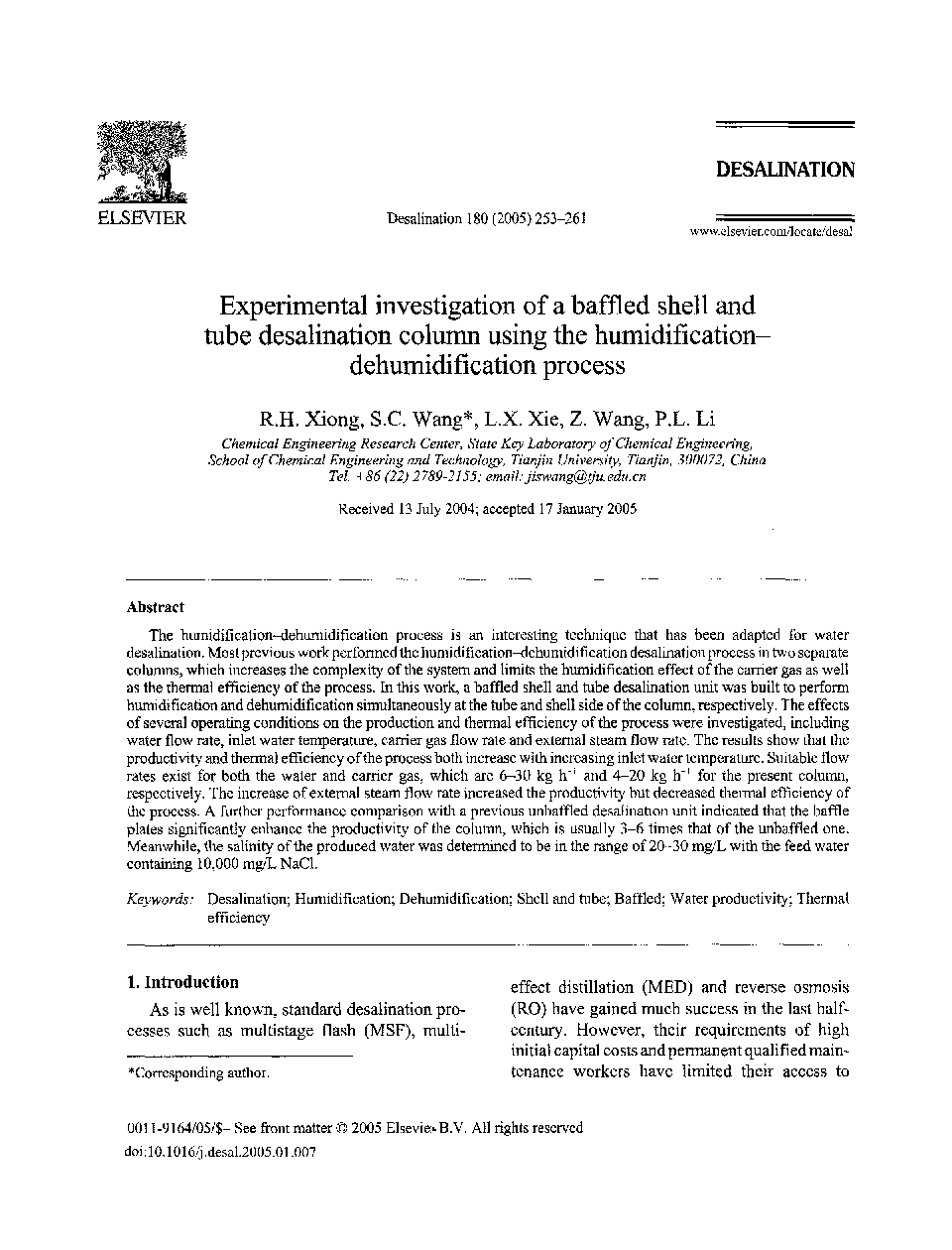| Article ID | Journal | Published Year | Pages | File Type |
|---|---|---|---|---|
| 9681075 | Desalination | 2005 | 9 Pages |
Abstract
The humidification-dehumidification process is an interesting technique that has been adapted for water desalination. Most previous work performed the humidification-dehumidification desalination process in two separate columns, which increases the complexity of the system and limits the humidification effect of the carrier gas as well as the thermal efficiency of the process. In this work, a baffled shell and tube desalination unit was built to perform humidification and dehumidification simultaneously at the tube and shell side of the column, respectively. The effects of several operating conditions on the production and thermal efficiency of the process were investigated, including water flow rate, inlet water temperature, carrier gas flow rate and external steam flow rate. The results show that the productivity and thermal efficiency of the process both increase with increasing inlet water temperature. Suitable flow rates exist for both the water and carrier gas, which are 6-30 kg hâ1 and 4-20 kg hâ1 for the present column, respectively. The increase of external steam flow rate increased the productivity but decreased thermal efficiency of the process. A further performance comparison with a previous unbaffled desalination unit indicated that the baffle plates significantly enhance the productivity of the column, which is usually 3-6 times that of the unbaffled one. Meanwhile, the salinity of the produced water was determined to be in the range of 20-30 mg/L with the feed water containing 10,000 mg/L NaCl.
Keywords
Related Topics
Physical Sciences and Engineering
Chemical Engineering
Filtration and Separation
Authors
R.H. Xiong, S.C. Wang, L.X. Xie, Z. Wang, P.L. Li,
